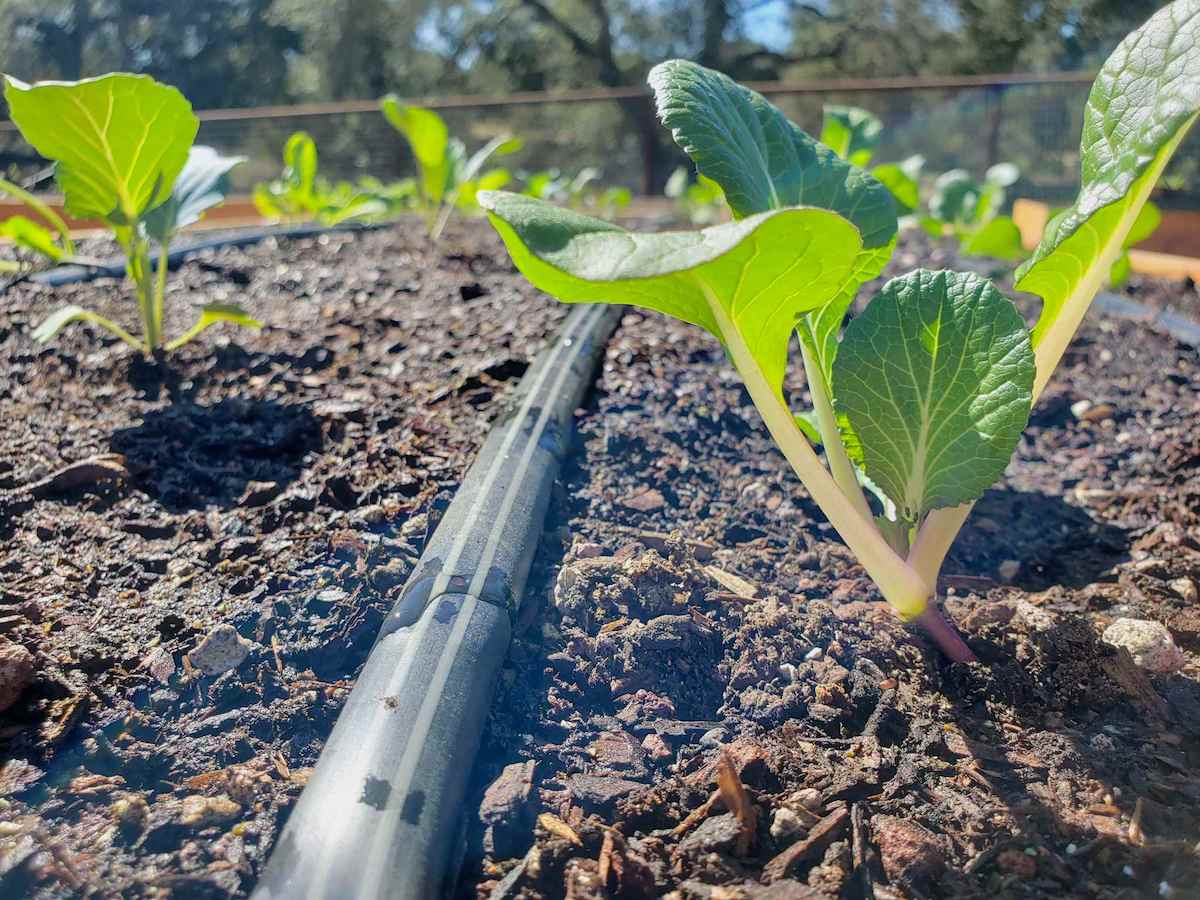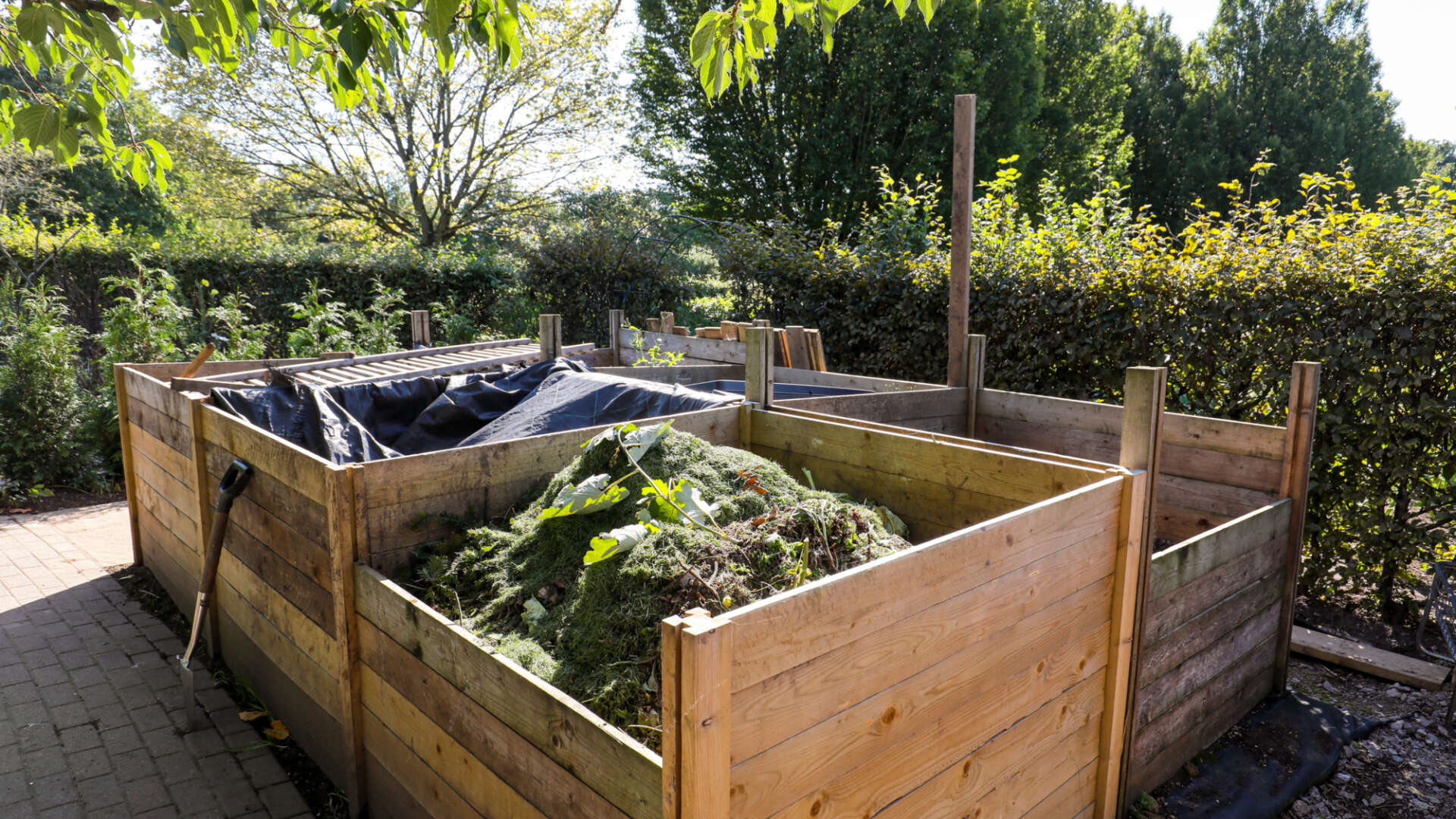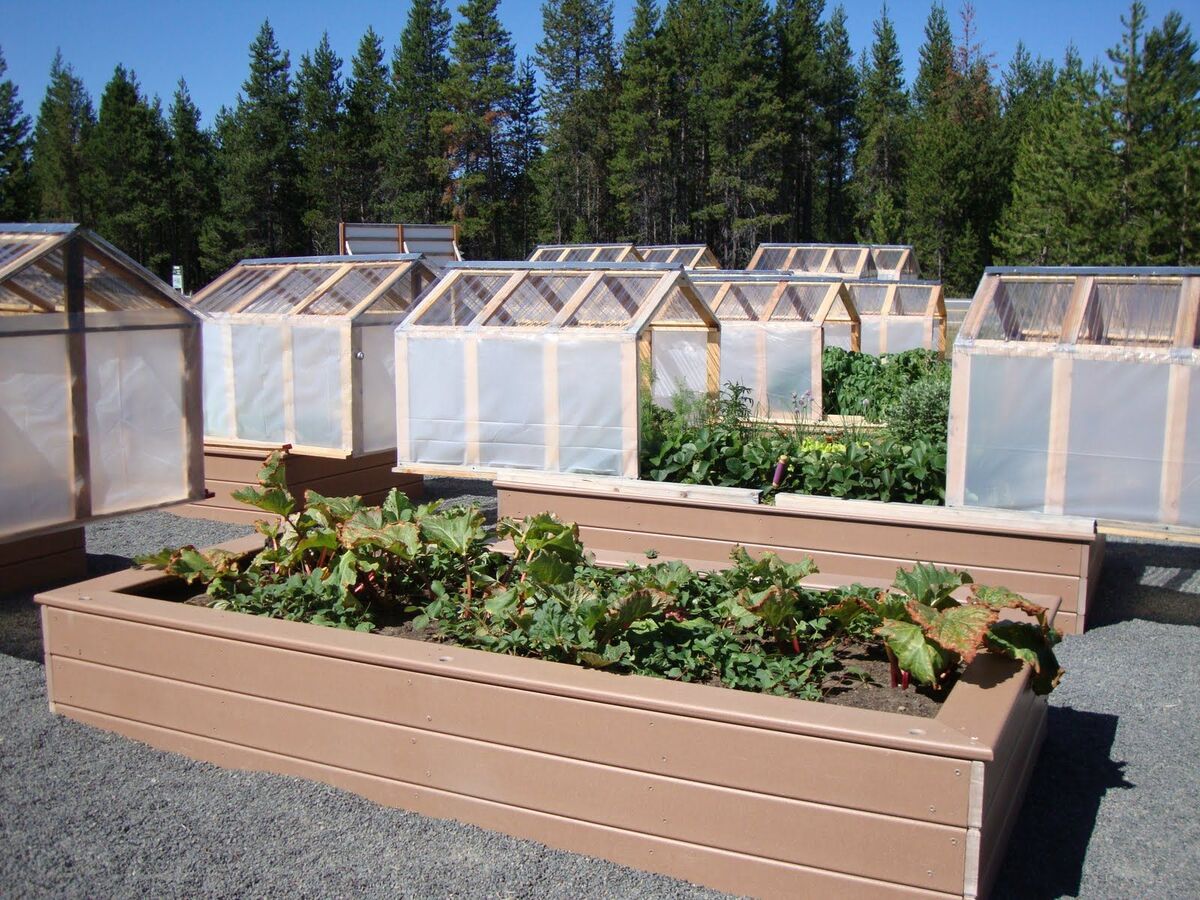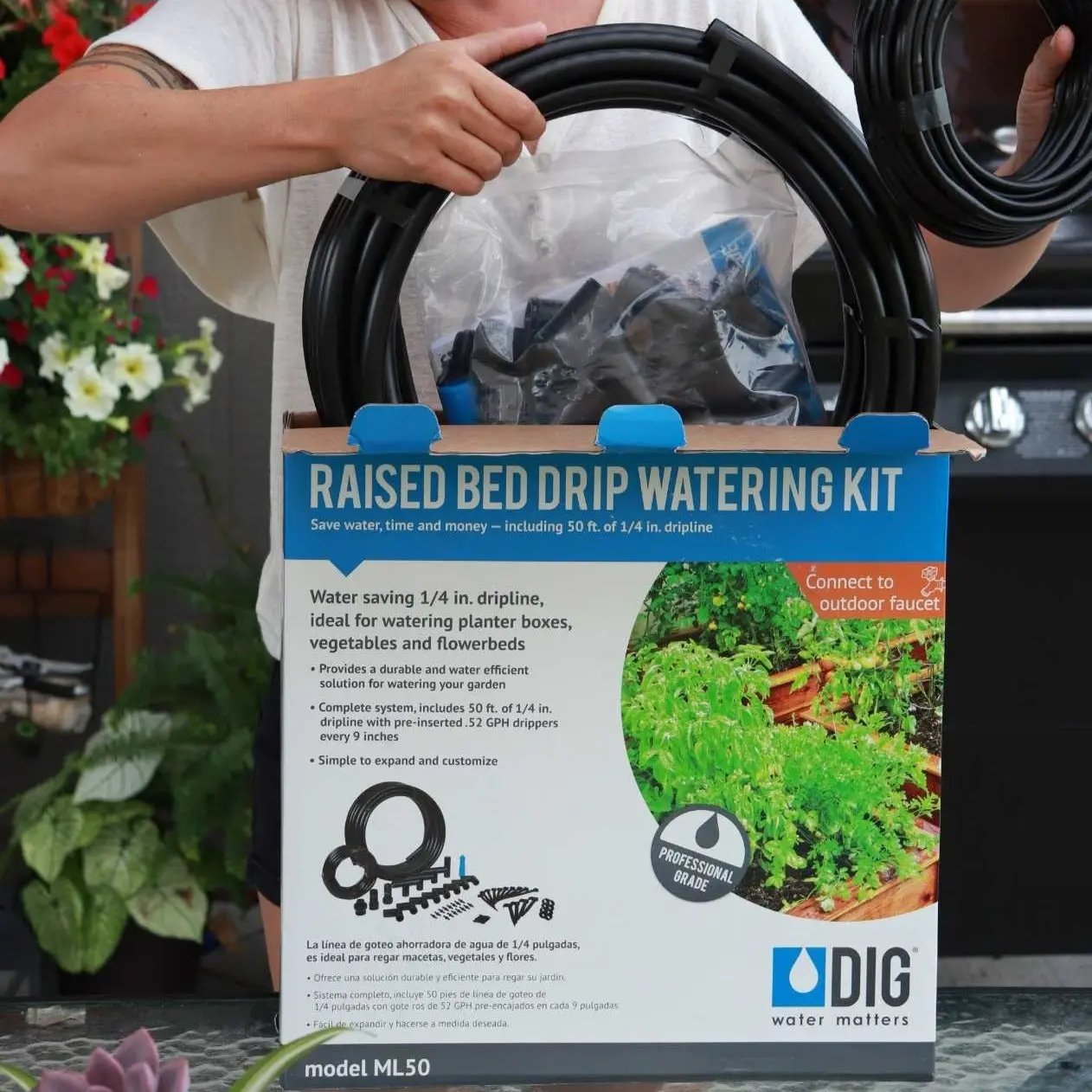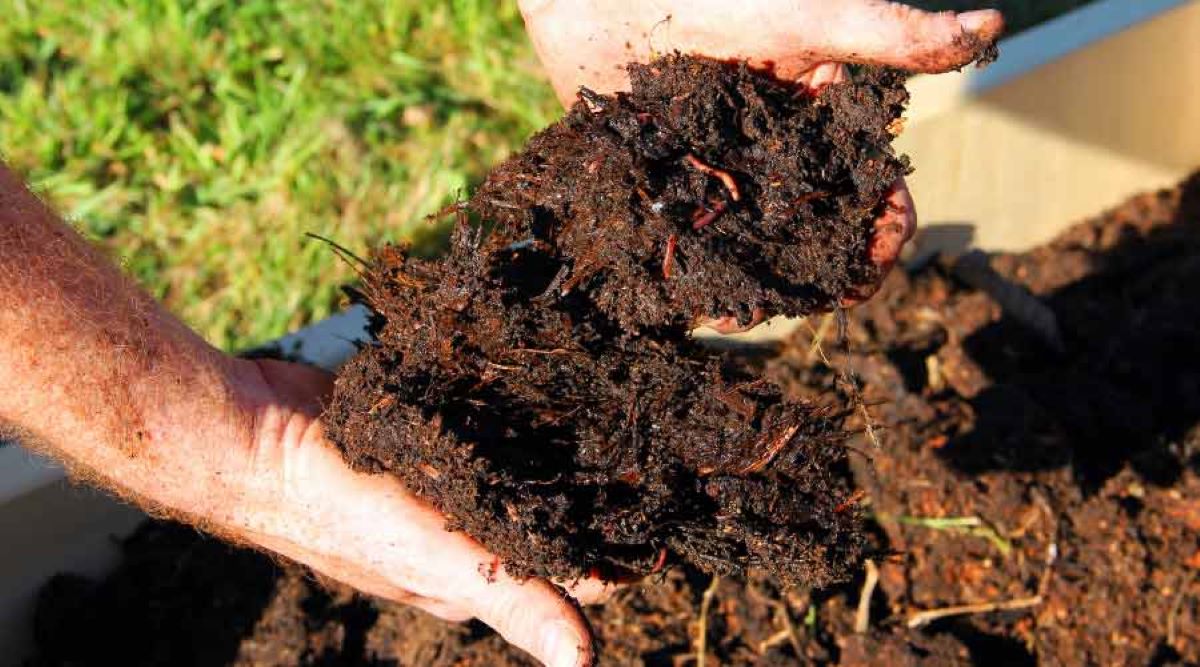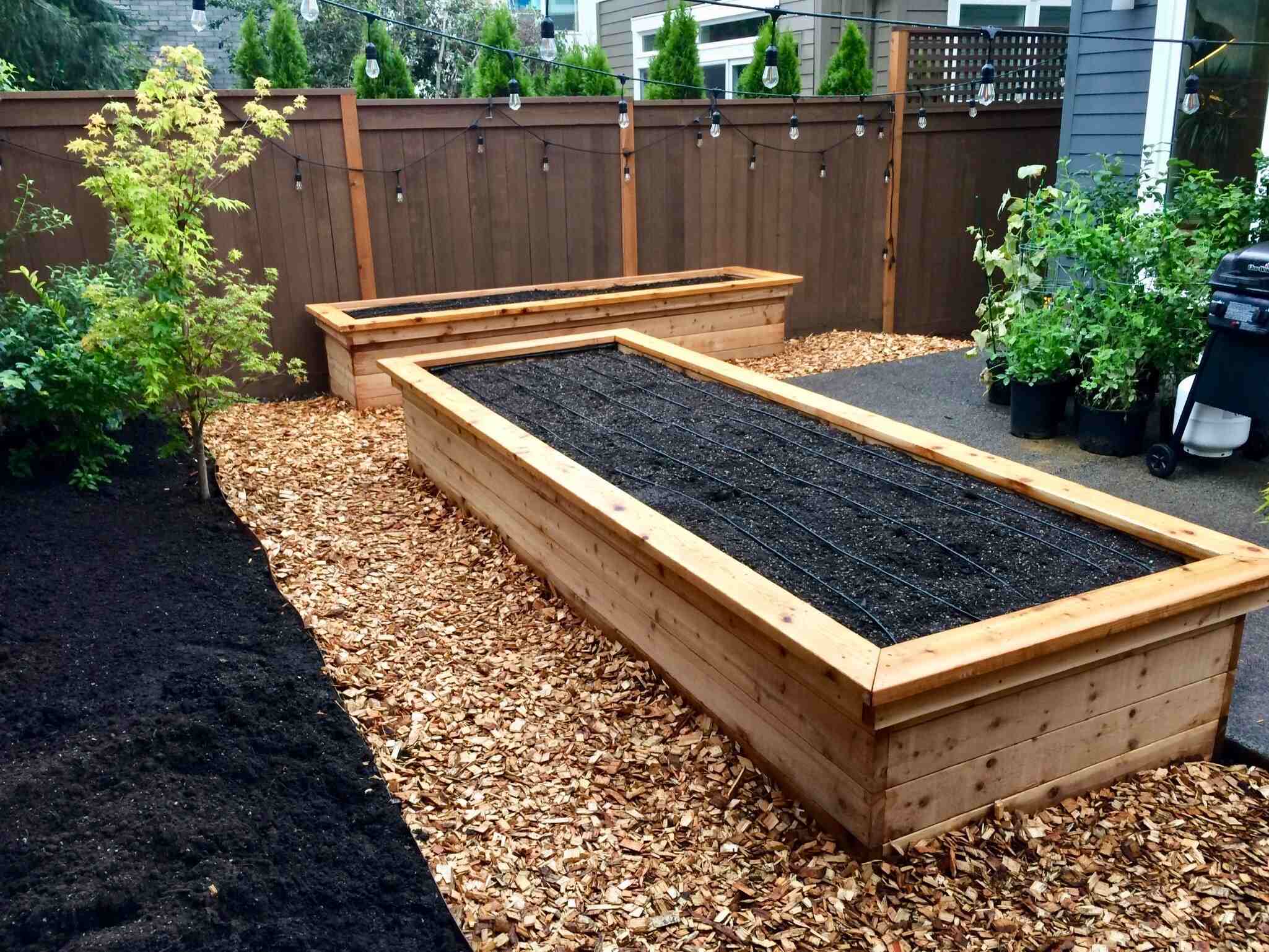Home>Gardening Tips and Tricks>Eco-Friendly Gardening>How Much Compost To Add To Raised Garden Bed


Eco-Friendly Gardening
How Much Compost To Add To Raised Garden Bed
Modified: February 8, 2024
Discover eco-friendly gardening tips and learn how much compost to add to your raised garden bed. Start growing a flourishing garden today!
(Many of the links in this article redirect to a specific reviewed product. Your purchase of these products through affiliate links helps to generate commission for Chicagolandgardening.com, at no extra cost. Learn more)
Table of Contents
Introduction
Welcome to the exciting world of eco-friendly gardening! In today’s fast-paced world, more and more people are becoming conscious of the impact their choices have on the environment. One area where this awareness is particularly evident is in gardening practices. Eco-friendly gardening, also known as sustainable gardening, is all about nurturing and maintaining a garden ecosystem that is in harmony with nature. One key aspect of eco-friendly gardening is the use of compost in raised garden beds.
Raised garden beds provide numerous benefits for both novice and experienced gardeners, from improving soil drainage and preventing soil erosion to reducing weed growth and providing better access for gardeners. Adding compost to raised garden beds takes these benefits to the next level. Compost is a natural, nutrient-rich soil amendment created by the decomposition of organic matter such as kitchen scraps, yard waste, and fallen leaves. When added to raised garden beds, compost improves soil structure, promotes healthy root growth, enhances nutrient availability, and increases water retention capacity.
In this comprehensive guide, we will explore the benefits of adding compost to raised garden beds, factors to consider before adding compost, how to determine the optimal amount of compost to add, steps to adding compost, and tips for maintaining compost in raised garden beds. By the end of this article, you will have all the knowledge you need to create a thriving eco-friendly garden using compost in your raised garden beds.
Benefits of Adding Compost to Raised Garden Beds
Adding compost to raised garden beds offers a multitude of benefits for both the health of your plants and the overall sustainability of your garden. Here are some of the key advantages:
- Improved Soil Structure: Compost helps to create a well-structured soil, allowing for better root penetration, water infiltration, and air circulation. This leads to healthier plant growth and stronger root systems.
- Enhanced Nutrient Availability: Compost is a rich source of essential nutrients like nitrogen, phosphorus, and potassium. These nutrients are released slowly over time, providing a steady supply of nourishment to your plants throughout the growing season.
- Increase in Soil Organic Matter: Compost is an organic material that increases the percentage of organic matter in the soil. This encourages beneficial microbial activity, which in turn enhances nutrient cycling and promotes a healthy soil ecosystem.
- Improved Water Retention: The organic matter in compost helps to improve the water-holding capacity of the soil. This means that your plants will have access to water for longer periods, reducing the need for frequent watering and conserving water resources.
- Reduction in Soil Erosion: By improving soil structure, compost helps to prevent soil erosion caused by heavy rain or wind. This is particularly important in raised garden beds, as the soil is more vulnerable to erosion.
- Reduced Weed Growth: A layer of compost can act as a natural mulch, suppressing weed growth and reducing the need for manual weeding. This not only saves you time and effort but also minimizes the use of herbicides and other chemical weed control methods.
- Contribution to Waste Reduction: Composting kitchen scraps and yard waste reduces the amount of organic waste that goes to landfills. By using this compost in your raised garden beds, you’re effectively recycling and repurposing these materials, closing the loop of the natural nutrient cycle.
- Promotion of Biodiversity: The abundance of organic matter in compost attracts a wide range of beneficial organisms like earthworms, beetles, and beneficial fungi. These organisms contribute to the overall biodiversity of your garden and help to create a more resilient and balanced ecosystem.
By adding compost to your raised garden beds, you’re not only improving the health and productivity of your plants, but you’re also playing a crucial role in preserving the environment and promoting sustainable gardening practices. Now that you know the benefits, let’s dive into the factors to consider before adding compost to your raised garden beds.
Factors to Consider Before Adding Compost to Raised Garden Beds
Before you start adding compost to your raised garden beds, there are a few important factors to consider. Taking these into account will help ensure that you make the most of this valuable soil amendment. Here are some factors to keep in mind:
- Quality of Compost: Not all compost is created equal, and the quality can vary depending on the materials used and the composting process. It’s important to choose high-quality, well-aged compost that is fully decomposed and free from any harmful pathogens or weed seeds. You can create your own compost or purchase it from a reputable source.
- Soil Testing: Before adding compost, it’s a good idea to have your soil tested. This will help you understand the nutrient levels and pH balance of your soil. Based on the results, you can make any necessary adjustments before adding compost. Adding too much compost can potentially throw off the nutrient balance and pH levels, so knowing your soil’s needs is essential.
- Existing Soil Composition: Consider the existing composition of your garden bed soil. If you have heavy clay soil, you may need to add more compost to improve drainage and soil structure. If you have sandy soil, compost can help increase its water-holding capacity. Understanding your soil’s characteristics will guide you in determining the optimal amount of compost to add.
- Plant Selection: Different plants have different nutrient requirements. Before adding compost, consider the types of plants you will be growing in your raised garden beds. Some plants, such as leafy greens, have higher nitrogen needs, while others, like root vegetables, may require more phosphorus. Adjusting the amount of compost accordingly can ensure that your plants have the nutrients they need for healthy growth.
- Climate and Watering Practices: The climate and your watering practices play a role in determining how much compost to add. In dry climates, where water retention is crucial, adding more compost can help improve moisture retention. In wetter climates, where drainage is important, you may need to add less compost to prevent waterlogged soil.
- Organic Fertilizers: If you plan to use organic fertilizers in conjunction with compost, it’s important to consider the nutrient content of both. Compost provides a slow-release source of nutrients, while organic fertilizers may provide more immediate nutrition. Balancing the quantities of both will help keep your plants well-fed throughout the growing season.
By carefully considering these factors, you can make informed decisions and tailor the amount of compost you add to your raised garden beds based on your specific garden’s needs. Once you’ve taken these factors into account, you’re ready to determine the optimal amount of compost to add to your raised garden beds. This will be covered in the next section.
Determining the Optimal Amount of Compost to Add to Raised Garden Beds
Adding the right amount of compost to your raised garden beds is crucial for maximizing its benefits without causing any issues. While there isn’t a one-size-fits-all approach, there are some guidelines you can follow to determine the optimal amount of compost to add:
- Soil Depth: Consider the depth of your raised garden bed. As a general rule, aim to add a 2-3 inch layer of compost to the top of the soil for beds that are less than 6 inches deep. For deeper beds, you can increase the layer to 4-6 inches. This will provide a sufficient amount of organic matter to enrich the soil without smothering the roots.
- Soil Volume: Calculate the volume of your raised garden bed by multiplying the length, width, and height. For every square foot of bed area, you’ll need approximately 1-2 cubic feet of compost. This estimate can vary depending on factors such as the existing soil composition and the desired nutrient levels.
- Planting Density: Consider the spacing and density of your plants. If you plan to grow plants that are spaced closely together, like in intensive planting or square foot gardening, you may need to add more compost to provide sufficient nutrients for multiple plants in a small area.
- Plant Nutrient Needs: Take into account the nutrient requirements of the plants you’ll be growing. Some plants, like heavy feeders, may benefit from a slightly thicker layer of compost, while others with lower nutrient demands may require less.
- Consistent Application: It’s better to add a moderate amount of compost annually rather than a large amount irregularly. Regularly applying a smaller layer of compost helps to maintain a consistent level of organic matter and nutrients in the soil, promoting healthy plant growth and maintaining the overall soil structure.
- Observation and Adjustments: Monitor the health and growth of your plants throughout the season. If you notice signs of over-fertilization, such as excessive foliage growth or nutrient burn, you may have added too much compost. On the other hand, if plants are showing signs of nutrient deficiencies, you may need to increase the amount of compost applied next season.
Remember, it’s always better to start with a conservative amount of compost and make adjustments as needed. Over time, you will gain a better understanding of your garden’s requirements and can fine-tune the amount of compost you add to achieve optimal results. In the next section, we will delve into the practical steps involved in adding compost to your raised garden beds.
Steps to Adding Compost to Raised Garden Beds
Adding compost to your raised garden beds is a straightforward process that can greatly benefit your plants and soil. Follow these steps to ensure a successful application:
- Prepare the Bed: Start by clearing any debris or weeds from your raised garden bed. Loosen the soil gently with a garden fork or tiller, being careful not to disturb the roots of any existing plants.
- Spread a Layer of Compost: Evenly spread a layer of compost on top of the prepared soil. Aim for a thickness of 2-3 inches for shallower beds, and 4-6 inches for deeper beds. Use a rake or garden trowel to spread the compost evenly, covering the entire bed surface.
- Mix the Compost with Soil: Use a garden fork or shovel to mix the compost into the top few inches of the soil. Work the compost gently into the soil, making sure it is well-incorporated. This will help distribute the nutrients and organic matter more evenly and allow the roots to access them easily.
- Plant your Seeds or Transplants: Once the compost is mixed with the soil, you can proceed with planting your seeds or transplants. Dig holes or furrows in the soil according to the recommended planting depth and spacing for your specific plants.
- Water Thoroughly: After planting, give your raised garden bed a thorough watering to help settle the soil and ensure good contact between the compost, existing soil, and plant roots. Water your garden bed regularly as needed to maintain proper moisture levels.
- Mulch the Surface: Consider applying a layer of organic mulch, such as straw or wood chips, to the surface of your raised garden bed. The mulch will help conserve moisture, suppress weeds, and provide additional organic matter as it breaks down.
- Maintain Regular Watering and Care: Throughout the growing season, continue to water your raised garden bed as needed, paying attention to the moisture requirements of your specific plants. Monitor the health of your plants, addressing any pest or disease issues promptly. Regularly observe the condition of the soil and make adjustments as necessary.
By following these steps, you’ll be able to incorporate compost effectively into your raised garden beds, creating a nourishing environment for your plants to thrive. However, it’s essential to remember that compost is an ongoing process, and maintenance is key to its success. In the next section, we will discuss some essential tips for maintaining compost in your raised garden beds.
Tips for Maintaining Compost in Raised Garden Beds
Maintaining compost in raised garden beds is essential to ensure its continued effectiveness in nourishing your plants and improving overall soil health. Here are some valuable tips to help you maintain compost in your raised garden beds:
- Add Compost Regularly: As compost breaks down over time, it loses volume and nutrients. To replenish these, add a fresh layer of compost annually or as needed. This will ensure a steady supply of organic matter and essential nutrients for your plants.
- Monitor Moisture Levels: Compost should be kept moist, but not waterlogged. Regularly check the moisture levels in your raised garden beds and water accordingly. Avoid letting the compost dry out completely, as this can hinder the decomposition process.
- Turn or Mix the Compost: Periodically turning or mixing the compost in your raised garden beds helps aerate the pile and accelerate the decomposition process. Use a garden fork or shovel to gently mix the compost every few weeks, ensuring that all parts of the pile receive adequate oxygen and moisture.
- Avoid Over-Application: While compost is beneficial, it is possible to overapply it. Excessive amounts of compost can cause nutrient imbalances, waterlogging, and even root damage. Stick to the recommended thickness and adjust based on the specific needs of your plants.
- Compost Cover Crops: Consider planting cover crops, such as clover or rye grass, in your raised garden beds during the off-season. These plants help to prevent erosion, improve soil structure, and provide additional organic matter when turned into the soil.
- Manage Pests and Diseases: Keep a close eye on your raised garden beds for any signs of pests or diseases. Promptly address any issues to prevent them from spreading and causing harm to your plants and compost. Avoid adding diseased plant material to your compost pile.
- Rotate Crops: Practicing crop rotation in your raised garden beds helps minimize the risk of nutrient depletion and soil-borne diseases. By rotating your crops each season, you help maintain the overall health and fertility of the soil, reducing the reliance on excessive compost application.
- Use Compost Tea: To further enhance the benefits of compost, consider making compost tea. This is done by steeping compost in water and then using the resulting liquid as a nutrient-rich fertilizer. Dilute the compost tea with water and apply it to your plants’ foliage or directly to the soil.
By following these tips, you can ensure that your compost continues to enrich your raised garden beds and provide optimal nutrition for your plants. Experiment with different techniques to find the methods that work best for you and your garden. With proper maintenance, your raised garden beds will thrive year after year.
Conclusion
Eco-friendly gardening is a rewarding and sustainable practice that allows us to connect with nature while minimizing our impact on the environment. Adding compost to raised garden beds is a simple yet effective way to improve soil structure, enhance nutrient availability, conserve water, reduce erosion, and promote overall plant health. By considering factors such as compost quality, soil composition, plant nutrient needs, and climate, you can determine the optimal amount of compost to add to your raised garden beds.
Following the practical steps of preparing the bed, spreading the compost, mixing it with the soil, and planting your seeds or transplants will ensure the proper incorporation of compost into your garden. Regular maintenance, such as adding compost annually, monitoring moisture levels, turning or mixing the compost, and managing pests and diseases, will help sustain the benefits of compost in the long run.
Remember, eco-friendly gardening is a continuous journey of learning and adapting. Stay observant and make adjustments as needed to create a thriving and sustainable garden ecosystem. By embracing the use of compost in your raised garden beds, you not only nurture your plants but also contribute to the preservation of our natural resources and the health of our planet. Start incorporating compost in your raised garden beds today and enjoy the abundant rewards of sustainable gardening.

